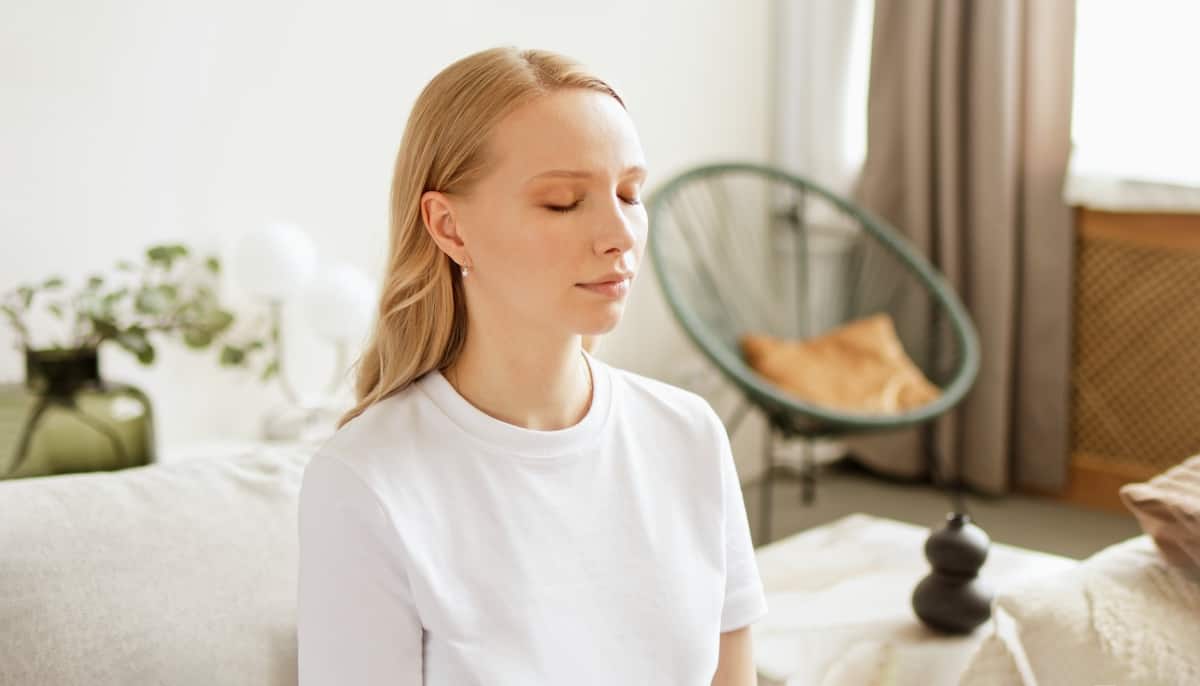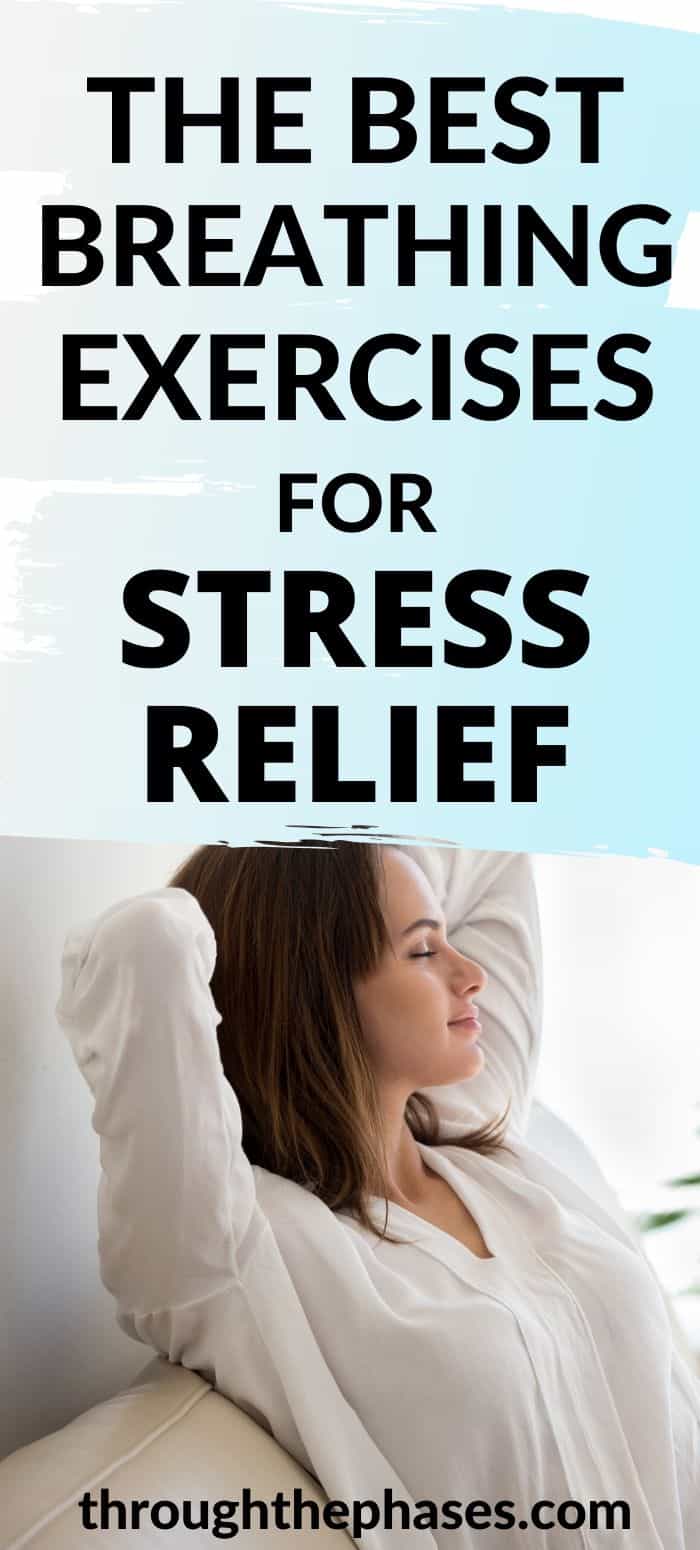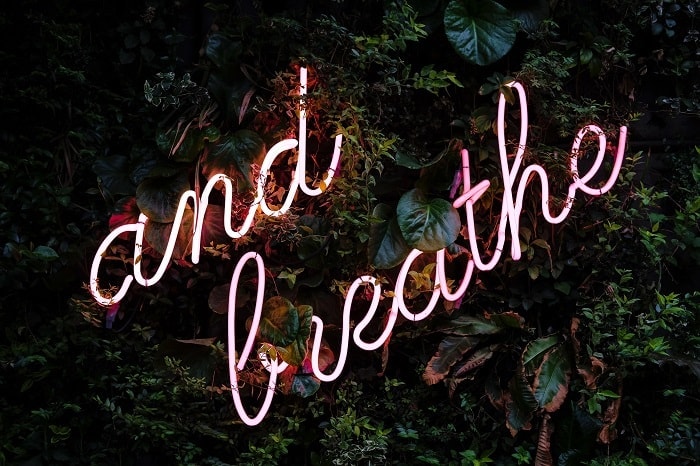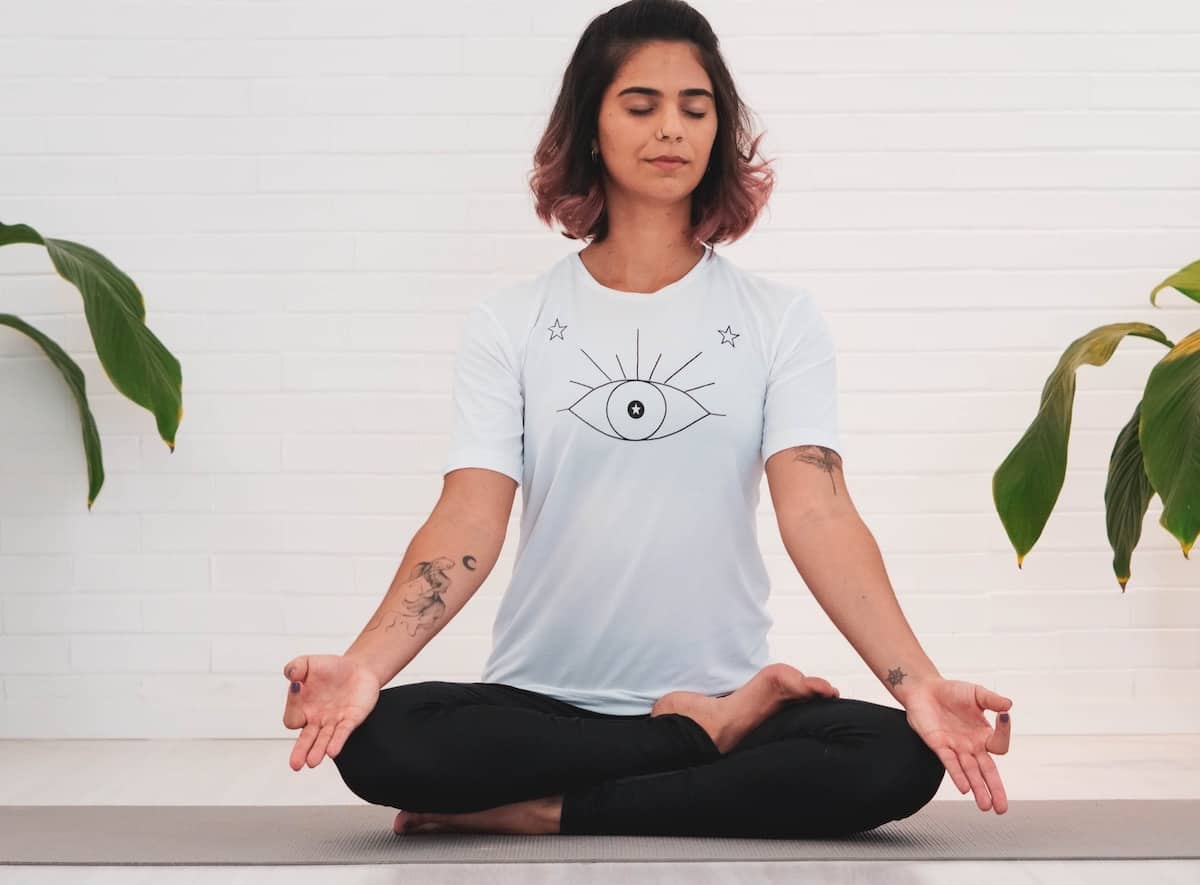When we’re stressed or overwhelmed it can sometimes feel like nothing can relieve it. But it’s important to remember that there is a tool we always have in our arsenal, and that is our breath!
Practicing different breathing techniques can have amazing effects on our stress levels and help us develop more resilience to stressful events.
If you’ve been feeling it lately, pranayama for stress relief is a practice that I’d really encourage you to explore!

Pranayama has been a huge part of my mental health journey, especially my struggles with anxiety and stress.
That’s because the mind and body are strongly linked – our mental state can affect our breath, and our breath can affect our mental state!
Pranayama has allowed me to sit with more difficult emotions and prevent them from becoming too overwhelming, and I would highly recommend pranayama to anybody else suffering from the effects of stress and nervous system dysregulation.
In this post I’ll be covering some of the key benefits of pranayama, along with some of my favourite types of pranayama for stress relief.

This post may contain affiliate links. Click here to read my full disclosure.
What is pranayama?
First and foremost, what actually is pranayama?
Pranayama is a sanskrit word, which essentially describes the practice of controlling your breath in some form.
Prana = energy + yama = control.
It is called such because in yogic tradition the breath is considered to be our “life force” energy.
This breath control can be a form of meditation and is used as a tool to enhance other practices such as yoga in particular.
Pranayama can also offer many benefits when used as its own exclusive practice. There are multiple different pranayama techniques, with each of them offering their own individual benefits!
Pranayama breathing benefits
Here are some of the key benefits of a regular pranayama practice, backed by research:
- Pranayama improves skin health by supplying a higher amount of oxygen to the skin cells than typical breathing
- Pranayama improves digestion by helping to calm the gut-brain axis
- Pranayama helps improve the health of the lungs and can relieve symptoms of some conditions such as asthma
- Pranayama can help improve sinus health by encouraging air flow and relieving blockages
- Pranayama can help improve cardiovascular health by modifying the heart rate and increasing oxygen flow
- Pranayama can help to boost immunity by decreasing stress and inflammatory levels in the body
- Pranayama can help improve quality of sleep and overall quality of life
- And of course, pranayama can reduce psychological stress and make you feel more relaxed
And these are just some of the yoga breathing benefits that can be backed up by research!
Pranayama has many more benefits for our spiritual selves and can help us to enter deeper states of meditation, thus also further aiding in stress relief.
I can also attest to the power of pranayama for chronic illness recovery, through the power of nervous system regulation. This has been a key part of my recovery journey!

Preparing for pranayama
Preparing for pranayama should be treated in the same way that you’d prepare for any meditation.
This means setting up your space in a way that makes you feel relaxed and grounded.
This will be different for everybody but I personally love to cleanse my space with incense and dim the lights with a himalayan salt lamp, which are also said to improve air quality.
Then bring yourself to a comfortable seat in a position that you can maintain for an extended period without any discomfort. You might find that a meditation cushion or a chair can help with this.
Center yourself by first becoming aware of your breath. At this point you don’t need to worry about trying to control it.
Just be mindful and notice your breathing for a few minutes until you feel centered and ready to start your pranayama.

5 best pranayama for stress relief
I hope by now you have a good understanding of the benefits of a regular practice of pranayama and how to prepare to begin.
These are some of the best pranayama for stress relief that you can use in times of overwhelm or for general daily wellbeing!
1. Slow exhalations
Breathing with a slow exhalation is one of the best yoga breathing exercises for beginners and is a simple way to reduce stress at any moment.
Don’t worry too much about the exact length of your exhale, but instead focus on extending the exhalation so that it is longer than your inhalation.
It might help to count the lengths of your inhales/exhales to achieve this balance.
Breathing with a slow exhalation activates the parasympathetic nervous system and reduces stress levels in the body.
This is because when you exhale your heart rate slows down, in comparison to your inhale when your heart rate increases. By extending your exhalation you are able to slow down your heart rate by stimulating the vagus nerve.

2. Alternate nostril breathing (nadi shodhana)
Alternate nostril breathing, known as nadi shodhana in sanskrit, is a personal favourite pranayama of mine for stress relief.
I find this to be an incredibly grounding pranayama that really helps to slow the heart rate and increase feelings of calm and relaxation.
This technique can take a bit of practice getting used to, but once you master it you’ll find it comes naturally with very little effort.
To practice alternate nostril breathing take your right hand up towards your nose with your thumb and your little finger outstretched and your other fingers tucked into your hand in a “hang loose” kinda gesture.
Take a singular breath and exhale completely, then use your thumb to close your right nostril. Inhale through the left nostril before sealing it shut with your finger, release your thumb and exhale through the right nostril.
Keep your left nostril sealed and inhale through your right nostril. Then release the left nostril, seal the right nostril closed and exhale through the left nostril.
This is one singular round and can be repeated for around 5 minutes to feel the stress relieving benefits!

3. Bumble bee breath (brahmari)
The bumblebee bee breath (also known as bhramari pranayama) is aptly named because you make the sound of a buzzing bee on your exhale.
This is a super easy pranayama to practice. Keep the lips lightly sealed as you inhale through the nose, then make a humming “M” sound as you exhale for as long as you can before you need to inhale again.
The longer you can make the buzzing sound, the more stress relieving this pranayama becomes, but don’t try and force your breath past your own capacity otherwise this will have the opposite effect.
The key is you want this to feel like a natural and effortless exercise that brings a sense of mindfulness and calm.

4. Sahita kumbhaka breath
Kumbhaka means retention of breath. However, this pranayama shouldn’t be mistaken as holding one’s breath.
In fact, this exercise is less about breath control and more about breath awareness or “conscious breathing”.
In the sahita kumbhaka breath, you want to bring your awareness to the subtle space between the inhale and the exhale, and vice versa.
This is the part of the breath that is often overlooked, but it is in this space that we find stillness.
By bringing your attention to the subtle breath retention, you are bringing mindfulness into your breath cycle and returning to the present moment, which can in turn promote feelings of relaxation and calm.
Remember, we’re not trying to control here – simply be aware.
Sign up to get your free beginner’s meditation handbook!
5. Ujjayi breath (ocean breath)
If you’re familiar with a yoga asana practice, then this is the pranayama that you have most likely already heard of.
Ujjayi breath, or ocean’s breath, is a long smooth breath, which produces a sound that can be likened to waves on a shore.
This is a simple breath to achieve, though not so simple to explain.
The desired sound is produced by gently constricting the throat with the lips sealed, which creates a restriction when pulling in and pushing out the breath.
Practice making this sound and notice how it makes you feel. Ideally this breath should be soothing and stress relieving!

Hopefully these 5 pranayama for stress relief give you a good place to start with bringing some more calm into your life.
Remember to practice consistently as part of your daily routine for best results and combine pranayama with meditation and yoga for even better stress busting effects!
But these pranayama exercises are also great to turn to as and when you need, particularly during a stressful situation to calm the nervous system and return to baseline.
I hope you enjoy this powerful tool for stress reduction!
Looking for more ways to relieve stress?
- 20 Powerful Journal Prompts for Stress Relief
- 35 Positive Affirmations for Stress Relief
- The 39 Most Relaxing Hobbies for Stress to Try in 2023
- How to JournalSpeak: Journaling for Chronic Symptoms
Don’t forget to pin this post!


Esther is the founder of Through the Phases, a wellbeing and healthy lifestyle blog dedicated to sharing mind/body/soul practices for self-exploration, healing, and fulfilment. She has a degree in Psychology, is yoga teacher trained (200hr), and is currently pursuing a Neuroscience MSc to further study the mind-body connection. Read more about her story here.